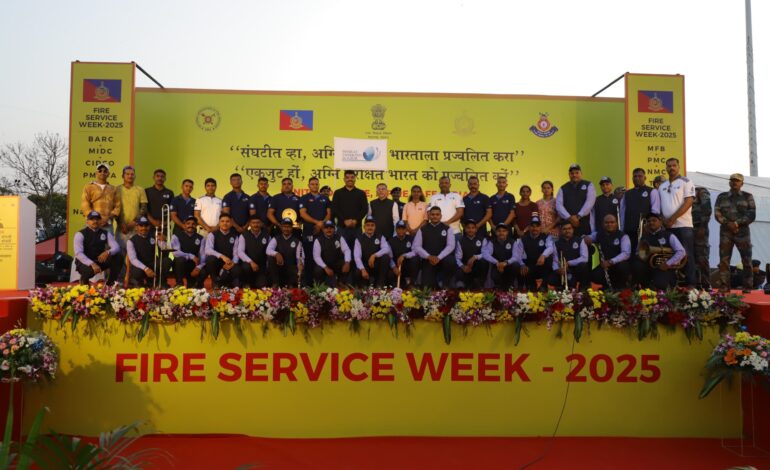In Conversation with a Visionary: Mr. Kirit Bhansali, Chairman of GJEPC

A Visionary Leader Shaping India’s Gem & Jewellery Industry
Mr. Kirit A. Bhansali is a prominent figure in India’s diamond and jewellery sector, known for his strategic insight and industry leadership. As a partner at Smital Gems, a leading diamond manufacturing company in Mumbai, he brings decades of experience to the forefront.
He currently serves as the Chairman of India Jewellery Park Mumbai (IJPM) and is a Committee Member of the Bharat Diamond Bourse (BDB). His previous role as Chairman of the Indian Institute of Gems and Jewellery (IIGJ) highlights his commitment to education and talent development.
Beyond business, Mr. Bhansali is also actively involved in socio-political and educational initiatives, reflecting his broader vision for community growth.
In this exclusive interview, he shares his thoughts on the evolving industry landscape, the power of innovation, and his roadmap for the future.
Q: Mr. Bhansali, you have been at the forefront of India’s gem and jewellery sector. How do you envision the industry transforming over the next two decades, especially in alignment with India’s USD 100 billion export goal by 2047?
Over the next two decades, I see India’s gem and jewellery industry transforming into a highly modern, sustainable, and design-driven global powerhouse. With the government’s support and industry’s collective efforts, we are confident of achieving the USD 100 billion export goal by 2047.
We will see greater integration of technology—be it in manufacturing, design, or marketing. The focus will be on value addition, branding, and developing India as a hub for high-quality jewellery catering to global tastes.
We also aim to nurture skilled artisans through training institutes, promote MSMEs, encourage digital transformation, and ensure compliance with international standards. Strategic trade agreements like CEPA with UAE and FTAs with other markets will further open doors for Indian exports.
India’s rich heritage in craftsmanship, combined with innovation, will be our strength. The vision is clear: to make ‘Made in India’ jewellery a global symbol of quality, trust, and creativity.
Q: As Chairman of GJEPC, you’ve spoken about strategic initiatives like the India Jewellery Park in Mumbai and the Gem Bourse in Jaipur. Could you share how these projects will reshape India’s manufacturing and export landscape?
Yes, both the India Jewellery Park in Mumbai and the Gem Bourse in Jaipur are game-changing initiatives by GJEPC to strengthen India’s manufacturing and export ecosystem.
The India Jewellery Park will provide state-of-the-art infrastructure, especially for MSMEs. It will boost organised manufacturing, create employment, and improve global competitiveness through better working environments and compliance standards.
Similarly, the Gem Bourse in Jaipur will bring all gemstone-related activities—cutting, trading, certification—under one roof. It will enhance transparency, efficiency, and help position Jaipur as a global hub for coloured gemstones.
These projects reflect our vision to build world-class infrastructure that empowers manufacturers, attracts investments, and accelerates exports. They are vital steps towards India becoming the preferred sourcing destination for global buyers.
Q: India is expanding its global footprint with platforms like SAJEX in Saudi Arabia and IJEX in Dubai. What role do these initiatives play in boosting India’s image as a global jewellery hub?
Initiatives like SAJEX in Saudi Arabia and IJEX in Dubai are part of GJEPC’s vision to take India closer to key global markets. These platforms serve as showcases for India-made jewellery, allowing international buyers to experience our craftsmanship.
They not only boost exports but also enhance India’s brand image as a reliable and high-quality jewellery sourcing destination. IJEX in Dubai, for example, positions us strategically in one of the world’s biggest jewellery trading hubs. SAJEX opens exciting new opportunities in the Gulf region, especially with Saudi Arabia’s evolving luxury market.
These initiatives are about building lasting relationships, increasing visibility, and making ‘Brand India’ shine globally.
Q: You’ve led innovation through your work at Smital Gems. How important is technology and design innovation in keeping India ahead in the highly competitive global diamond and jewellery market?
Innovation in technology and design is absolutely critical to staying ahead in the global diamond and jewellery market. At Smital Gems, we’ve always believed in blending traditional craftsmanship with modern tools.
Globally, buyers are looking for precision, uniqueness, and ethical sourcing. Technology helps us deliver that at scale, while design innovation ensures we stay in tune with evolving consumer preferences.
For India as a whole, embracing innovation will not only help us move up the value chain but also strengthen our position as a trusted supplier to top international brands. It’s this continuous evolution that will define our global success in the years ahead.
Q: With GJEPC identifying 17 key clusters for development, what are the specific goals for these clusters, and how will they contribute to India’s export momentum and job creation?
Identifying 17 key clusters is part of GJEPC’s holistic approach to ensure balanced growth across India’s gem and jewellery sector. Each cluster has its unique strength—be it diamonds in Surat, coloured gemstones in Jaipur, or gold jewellery in Kolkata and Coimbatore.
The goal is to provide these clusters with the right infrastructure, skill development, technology support, and market linkages. By doing so, we can enhance productivity, improve quality standards, and make local manufacturing more export-ready.
These clusters will play a crucial role in job creation, especially for artisans and women in semi-urban and rural areas. Ultimately, a strong network of empowered clusters will boost India’s export momentum and contribute significantly to achieving our long-term goal of USD 100 billion in exports by 2047.
Q: As someone who has contributed to both business and education through the Indian Institute of Gems and Jewellery (IIGJ), how do you see skill development shaping the next generation of artisans and industry professionals?
Skill development is the foundation of a strong and sustainable gem and jewellery industry. Through initiatives like the Indian Institute of Gems and Jewellery (IIGJ), our aim is to bridge the gap between traditional artistry and modern industry demands.
We are preparing the next generation to be not just artisans, but design thinkers, entrepreneurs, and globally competitive professionals. With structured training, exposure to technology, and industry internships, we are creating a talent pool that’s skilled, quality-conscious, and future-ready.
Empowering our youth with the right skills ensures continuity of India’s rich jewellery heritage, while also driving innovation and exports. It’s not just about creating jobs—it’s about building careers and transforming lives.
Q: Your leadership has always balanced global ambition with local empowerment. How is GJEPC supporting traditional craftsmanship while pushing for modernization and scale?
At GJEPC, we believe that India’s strength lies in its roots—our traditional craftsmanship is unmatched in the world. While we’re pushing for modernization, scale, and global reach, we are equally focused on preserving and empowering our artisanal legacy.
We support traditional karigars through skill upgradation programs, infrastructure support via Common Facility Centres, and social security initiatives like Swasthya Ratna and Parichay Cards. At the same time, we are encouraging them to adopt modern tools and techniques to improve productivity and quality.
Q: What policy reforms or government collaborations do you believe are crucial right now for sustaining India’s leadership in the gems and jewellery sector?
The government has consistently been a strong partner in the growth of our industry, and we are truly grateful for its continued support. At present, with the USA accounting for nearly 30% of India’s overall gem and jewellery exports, we believe that fast-tracking the proposed India-US Bilateral Trade Agreement (BTA) is crucial. We have already submitted our key recommendations for the BTA during a recent meeting with Shri Shaktikanta Das, Principal Secretary to the Prime Minister. We are hopeful that this agreement will provide a significant boost to exports and further strengthen India’s global leadership in the sector.
Q: Beyond business, you’re known for your dedication to socio-political and educational causes. How do these values influence your leadership style and vision for the industry?
My involvement in socio-political and educational causes has shaped my belief that true leadership lies in uplifting others and creating lasting impact.
These values deeply influence my work in the gem and jewellery industry. I believe in inclusive growth—where artisans, small manufacturers, women, and youth all have opportunities to rise. Whether it’s through education initiatives like IIGJ or social welfare programs for karigars, the aim is to build an ecosystem that empowers people at every level.
When we lead with empathy, integrity, and a sense of service, the industry doesn’t just grow—it thrives with meaning and pride. That’s the vision I carry forward every day.
Concluding Note:
The Takeaway – India’s Jewellery Journey Through a Leader’s Eyes
We are grateful to Mr. Kirit A. Bhansali, Chairman of GJEPC, for sharing his inspiring vision for India’s gem and jewellery industry. His insights reflect a powerful blend of respect for tradition and commitment to innovation, with a clear focus on empowering MSMEs, nurturing talent, and building global trust in ‘Made in India’ jewellery.
Through this thoughtful exchange, Mr. Bhansali reminds us that true leadership lies in purpose-driven progress—where every artisan, entrepreneur, and stakeholder contributes to a shared future.
At JewelBharat, we are proud to spotlight voices like his, which illuminate the path ahead while honouring the legacy that brought us here.




